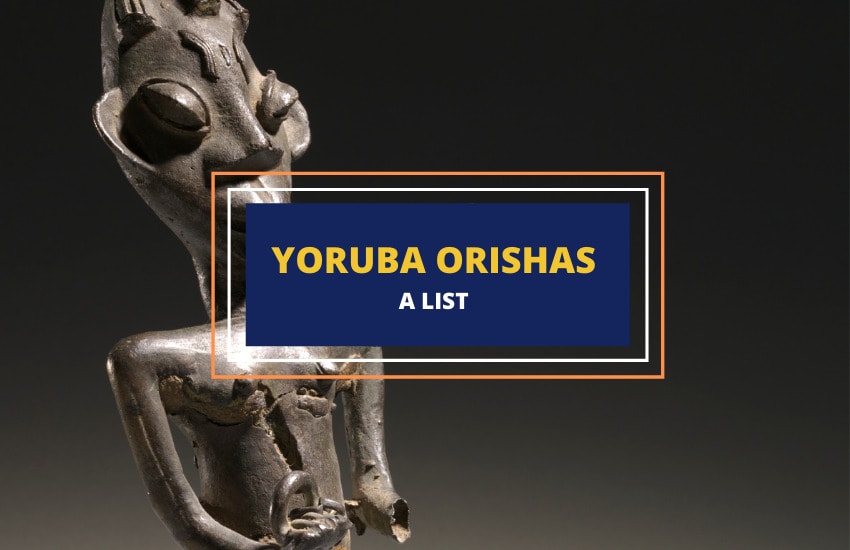
Table of Contents
The Yoruba religion is constituted by a conglomerate of beliefs, primarily from the territory comprising modern-day Nigeria, Ghana, Togo, and Benin. The Yoruba faith and several other religions that derived from it are also popular in many Caribbean and South American countries.
The Yoruba people believe that there is a Supreme God, called Oludumare, and that he governs the Earth through a series of minor deities, known as the orishas, that work as his assistants. Keep reading to know more about them.
Where Did the Orishas Come From?
In the Yoruba pantheon, the orishas are divine mediators between Oludumare, the Creator of the world, and humanity. However, since most Yoruba beliefs are based on oral traditions, there are many different accounts regarding how the orishas came to be.
In some myths, the orishas were a race of primogenial divine beings, who lived among mankind but didn’t yet have any powers. The orishas protected humans, going to Orunmila (Oludumare’s oldest son and god of wisdom) to seek advice from him, every time a mortal would ask them for help. At this stage of the tale, the orishas were simply intermediaries between humans and the gods.
This situation went on for some time, until an orisha called Oko asked Orunmila why the orishas didn’t have any specific knowledge of their own, so they could directly help humans without having to reach for him every time they needed help.
The wise Orunmila recognized that there wasn’t any good reason for them not to have special abilities, so he agreed to share his powers with the orishas. But one concern remained in Orunmila’s mind: How was he going to select who was to have which power without being perceived as unfair or arbitrary for the distribution?
Eventually, the god made his mind up and explained to the orishas that, on a certain day, he would ascend to the sky to pour down his divine gifts, so each orisha would be responsible for catching his or her own special ability. Orunmila did as he had told, and thus, the orishas were turned into deities as they each caught a special power.
However, another account for the existence of the orishas explains that these deities don’t share the same origin, as there are at least three different kinds of orishas.
In this version, the orishas fall into three categories: primordial deities, deified ancestors, and personifications of natural forces.
In this article, we base this list on this second account, and will explore the orishas of these three categories.
Primordial Deities
Primordial deities are considered emanations of Olodumare and have existed since before the world was created. Some of them are known as ara urun, meaning ‘people of heaven’, where they are believed to reside. Others, who descended to the Earth to be adored in their human incarnations, were called irunmole.
Some primordial deities are:
Eshu
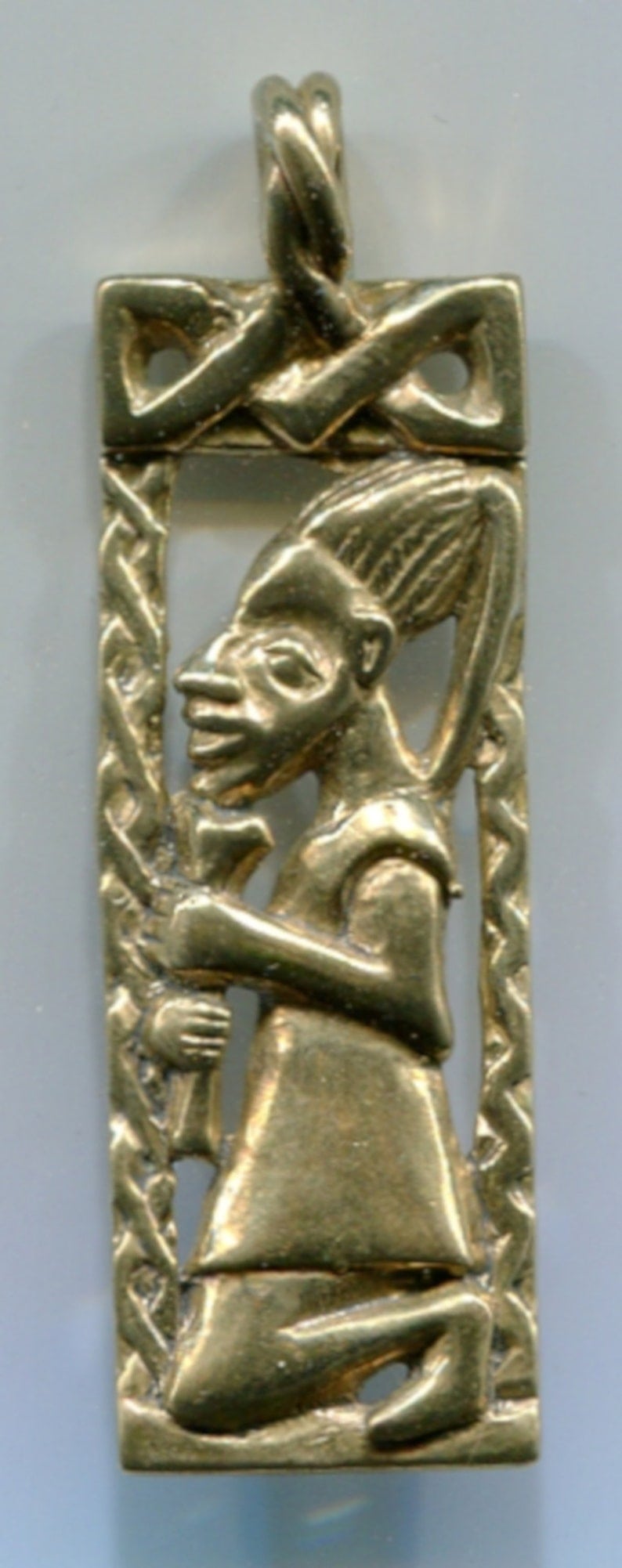
One of the most complex characters of the Yoruba pantheon, Eshu, also called Elegba and Elegua, is the messenger of the gods (he is especially at the service of Olodumare), and the intermediary between divinities and humans.
Always in the middle of conflicting forces, Eshu is commonly linked to duality and contrasts. Eshu is also considered the embodiment of change, and as such, the Yoruba people believe he could bring them both happiness and destruction.
When associated with the latter, Eshu is the deity of mischief. Curiously enough, when acting as an agent of cosmic order, Eshu was also referred to as the enforcer of divine and natural laws.
Orunmila
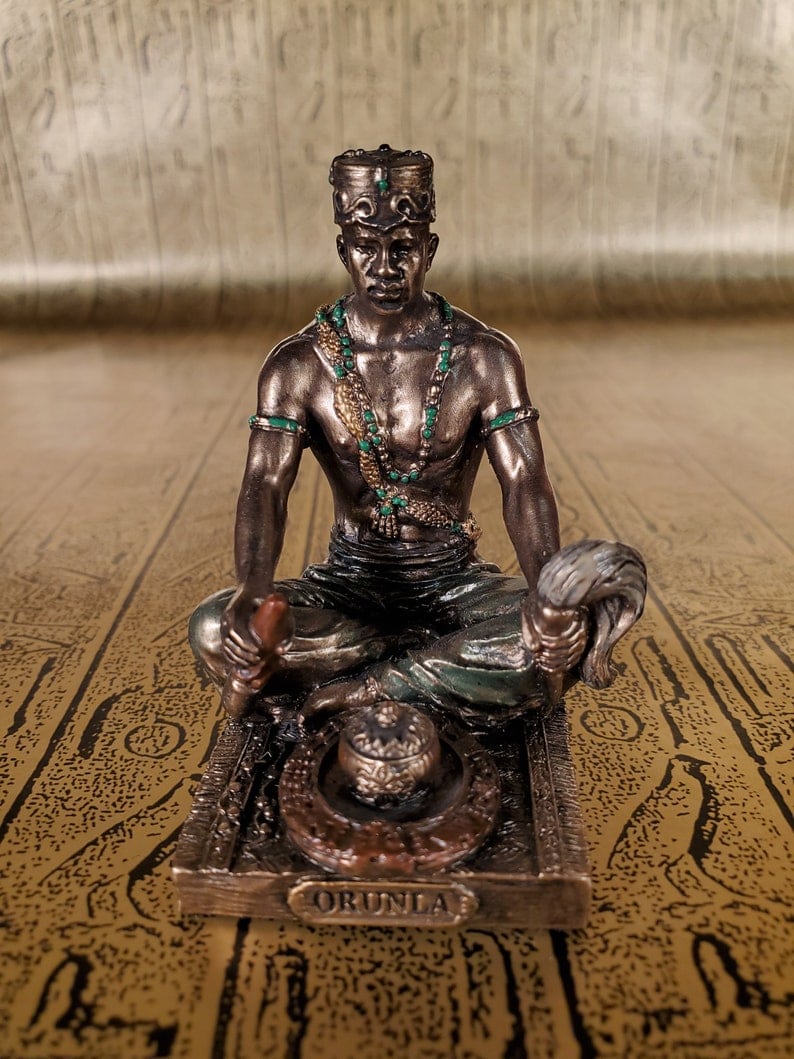
The orisha of wisdom, Orunmila is the first-born of Olodumare, and a prime deity. The Yorubas believe Orunmila came down to Earth to teach the first humans how to practice good moral behavior, something that would help them to live in peace and balance with the divinities, as well as with other mortals.
Orunmila is also the orisha of divination or Ifa. Divination is a practice that plays a major role in the Yoruba religion. Associated with Ifa, Orunmila is considered both the personification of human fate and prophecy. Very often, Orunmila is depicted as a sage.
Obatala
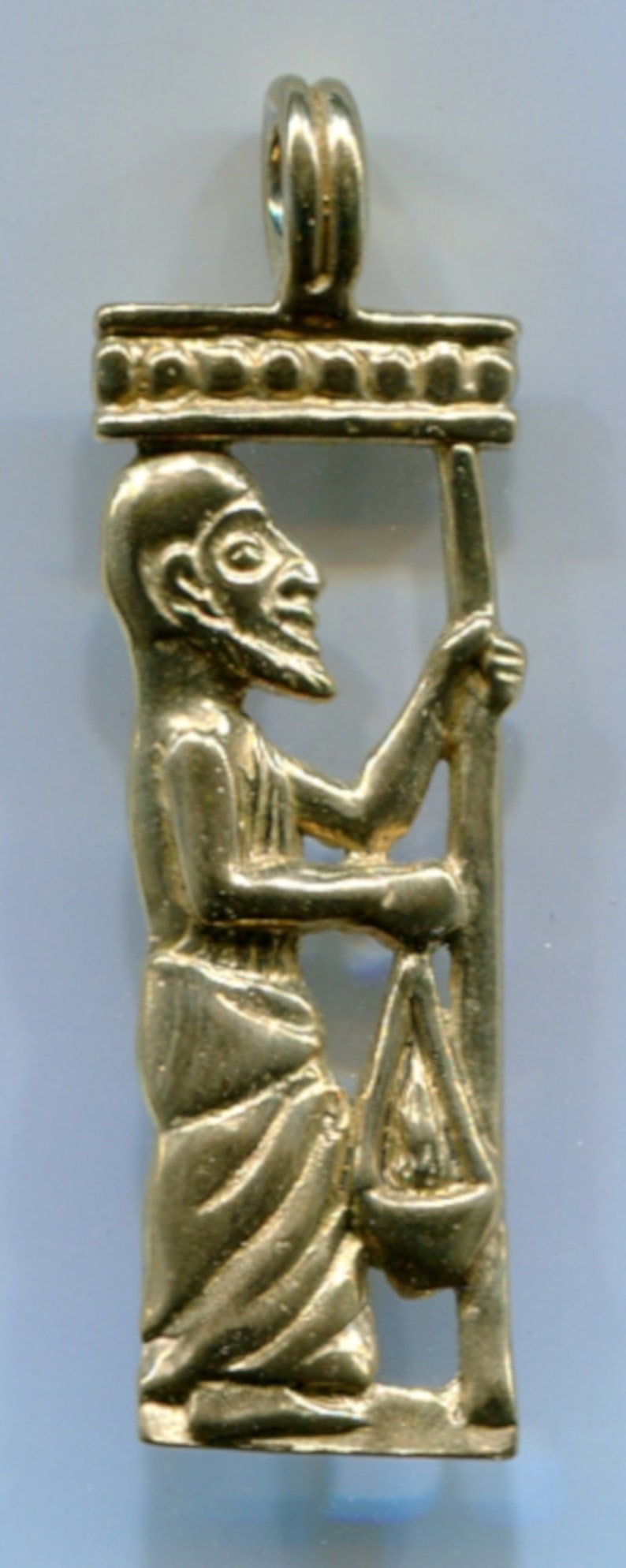
The creator of mankind, and god of purity and redemption, Obatala is a great example of how the orishas can sometimes show proof of a fallible, human-like character. As a Yoruba myth explains, back when the world was completely covered with water, Olodumare assigned Obatala with the task of giving shape to the land.
The orisha was very enthusiastic about his mission, but he got very drunk before finishing it and neglected his creational duties. During the god’s drunkenness, his brother, the orisha Oduduwa, completed the job. However, despite his mistake, Obatala redeemed himself by taking on the task of creating the human race. Obatala’s story can also be used to explain the divine origin of human fallibility.
Iku
The personification of death, Iku is the deity that takes away the spirits of those who die. It’s said that her arrogance made her challenge Orunmila to a duel. After being defeated, Iku lost her status as an orisha, however, Yoruba practitioners still regard her as one of the primordial forces of the universe.
Deified Ancestors
These are the orishas who were mortal at first but were later deified by their descendants for the significant impact that their lives had on Yoruba culture. This category is mainly made up of kings, queens, heroes, heroines, warriors, and founders of cities. According to myth, these ancestors would commonly ascend to the sky or sink into the ground before turning into deities instead of dying as normal mortals would.
Some deified ancestors are:
Shango
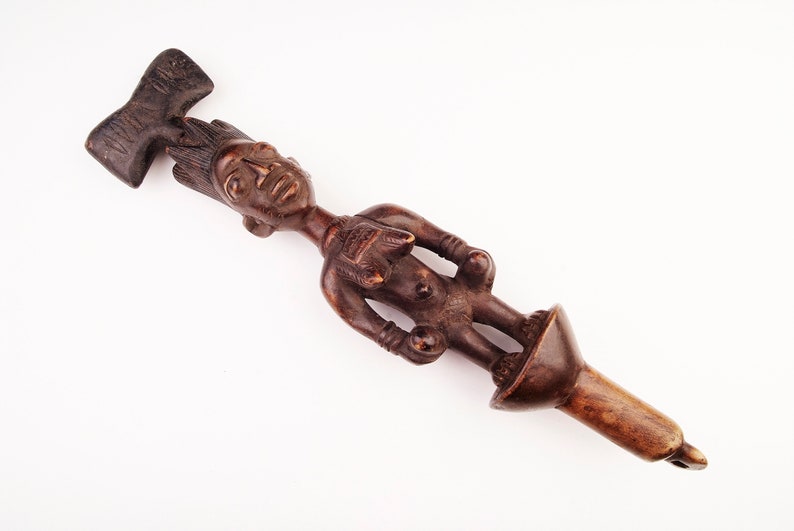
The third king of the Yoruba Oyo Empire, Shango was considered a violent ruler, but also one with notorious military achievements. He was supposed to have lived at some point between the 12th and the 14th century AD. His rule lasted for seven years and ended when Shango was dethroned by one of his former allies.
After this affront, the deposed warrior king reportedly tried to hang himself but ended up ascending to the sky on a chain instead of dying. Shortly afterward, Shango became the orisha of lightning, fire, virility, and war.
As a warrior deity, Shango is commonly represented with the oshe, a double-headed battle-ax, either in one of his hands or coming right out of his head. During the colonial period in the Americas, the African slaves that were transported to the Caribbean and South America brought the cult of Shango along with them. This is why today Shango is widely worshipped in other religions, including Cuban Santeria, Haitian Vodou, and Brazilian Candomble.
Erinle
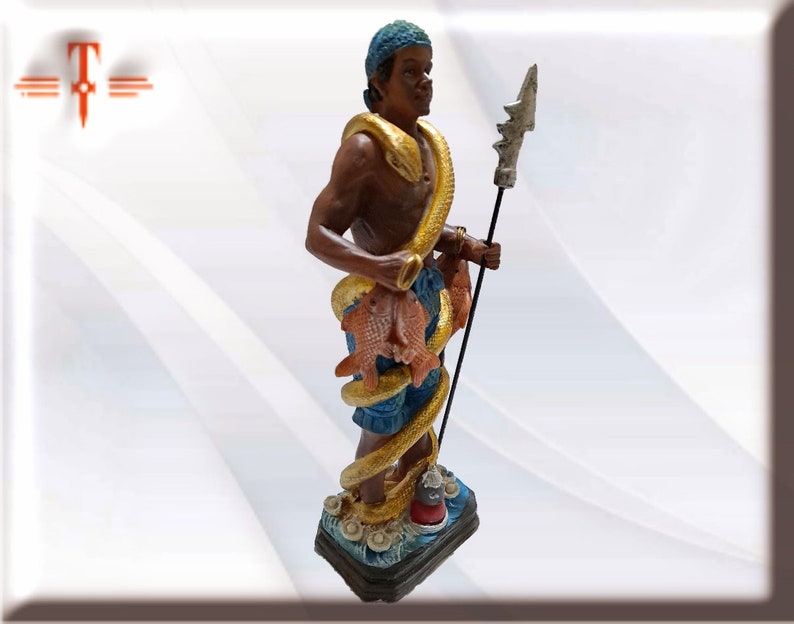
In Yoruba mythology, Erinle, also called Inle, was a hunter (or sometimes an herbalist) that took the first king of Ilobu to where the first town was destined to be founded. He subsequently becoming a river god.
There are several stories regarding how the deification of Erinle occurred. In one account, Erinle sank into the ground and became simultaneously a river and a water deity. In a variant of the myth, Erinle transformed himself into a river to appease the thirst of the Yoruba people, who had been struggling with the effects of a pernicious drought sent by Shango.
In a third account, Erinle became a divinity after kicking a poisonous stone. A fourth version of the myth suggests that Erinle was turned into the first elephant (it’s unclear by whom), and only after he had spent some time living like this, was the hunter granted orisha status. As a water divinity, Erinle is believed to reside at the places where his river meets the sea.
Personifications of Natural Forces
This category comprises divine spirits that were initially associated with a natural force or phenomenon, but were later granted the status of orishas, for the significant role that their representative element played in Yoruba society. In some cases, a primordial deity can also be regarded as the personification of a natural force.
Some personifications of natural forces are:
Olokun
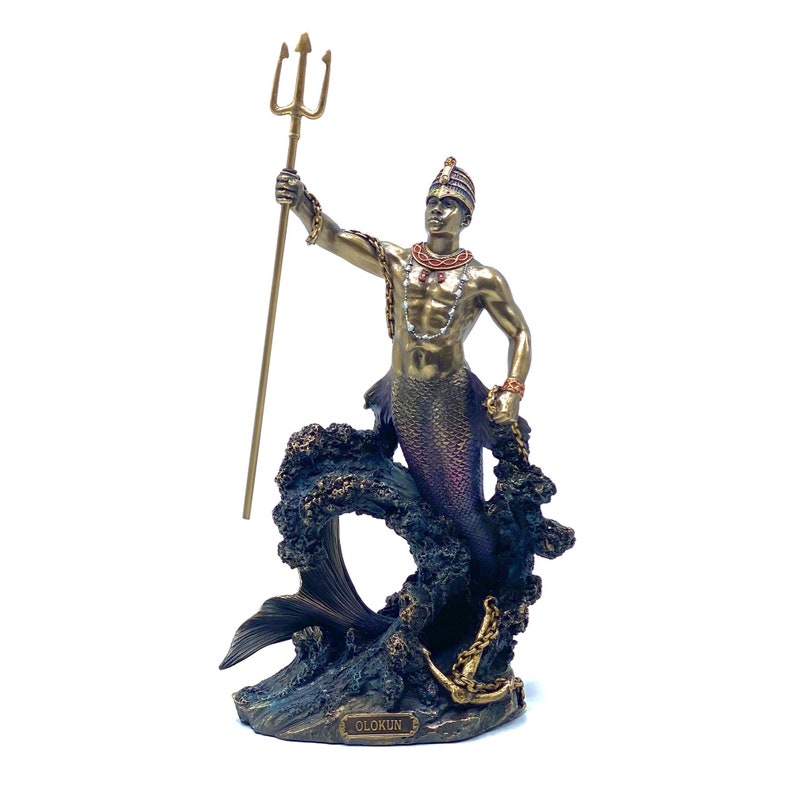
Related to the sea, especially the seabed, Olokun is considered one of the most powerful, mysterious, and impulsive deities of the Yoruba pantheon. It’s said that Olokun can grant wealth to humans at any time, but given his ambiguous nature, he is also known for inadvertently bringing devastation.
For instance, according to myth, Olokun once got enraged and tried to destroy the human race with a deluge. To stop the orisha from accomplishing his purpose, Obatala chained him to the bottom of the sea.
In Yoruba tradition, Olokun is commonly depicted as a hermaphrodite.
Aja
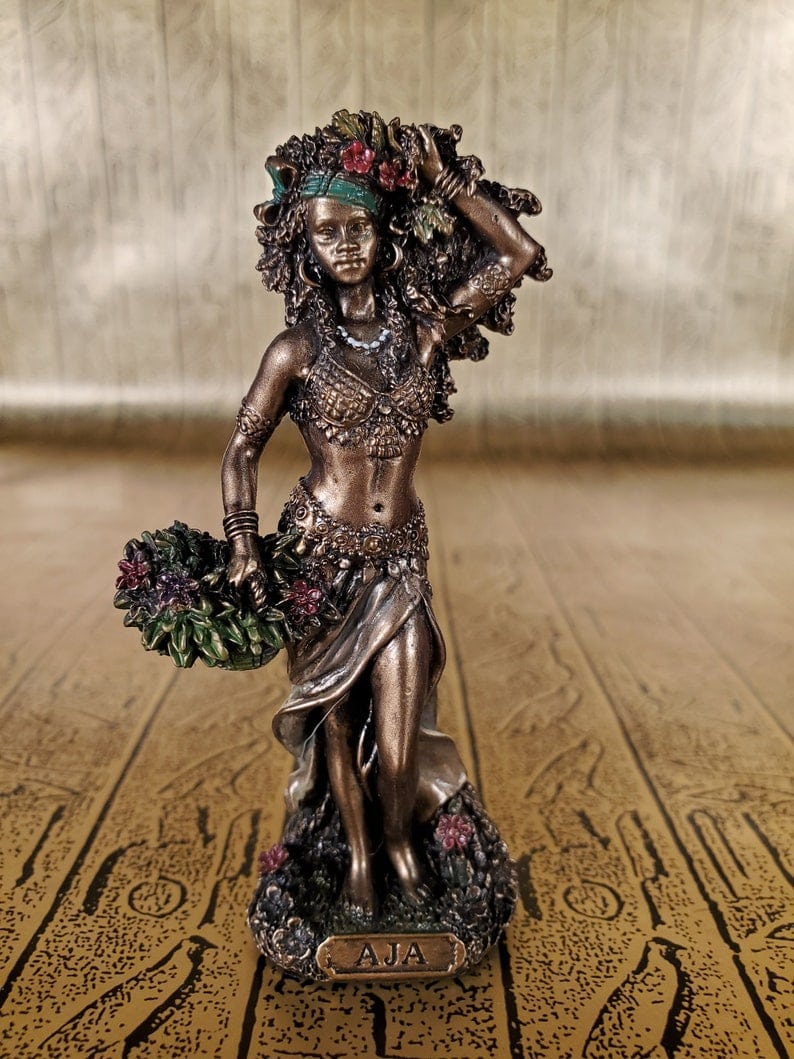
In the Yoruba pantheon, Aja is the orisha of the woodland and the animals that reside in it. She is also the patroness of herbal healers. According to oral tradition, during the earliest days of humanity, Aja would share much of her herbal and medicine knowledge with the Yoruba people.
Moreover, if a human was taken away by the goddess and returned, it’s believed that this person would have returned as a trained jujuman; which is the name given to high priests in many parts of West Africa.
It’s noteworthy that Aja is one of the few Yoruba divinities that present herself to mortals in her human form to offer help, instead of trying to scare them.
Oya
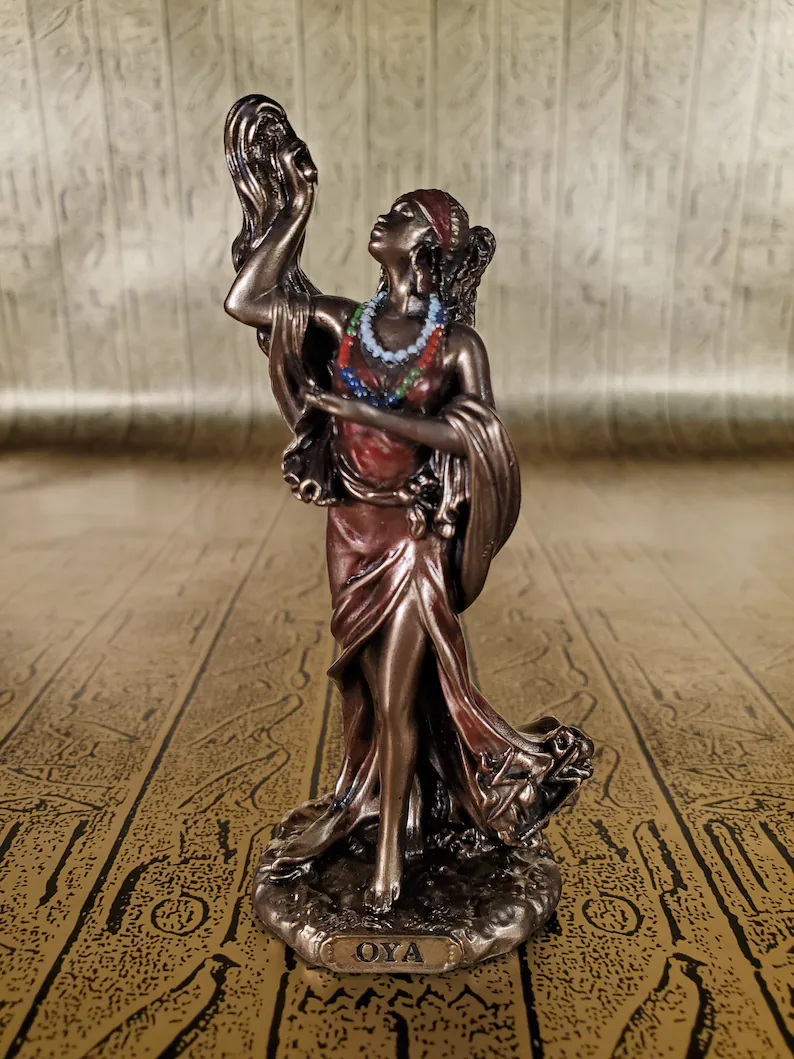
Considered the goddess of weather, Oya is the embodiment of the changes that have to take place before new things can start growing. She is also often associated with the notions of death and rebirth, as the Yorubas believe she assists those who have recently died in their transition to the land of the dead.
Similarly, Oya is regarded as the protectress of women. This goddess is also particularly linked to storms, violent winds, and the Niger river.
Yemoja
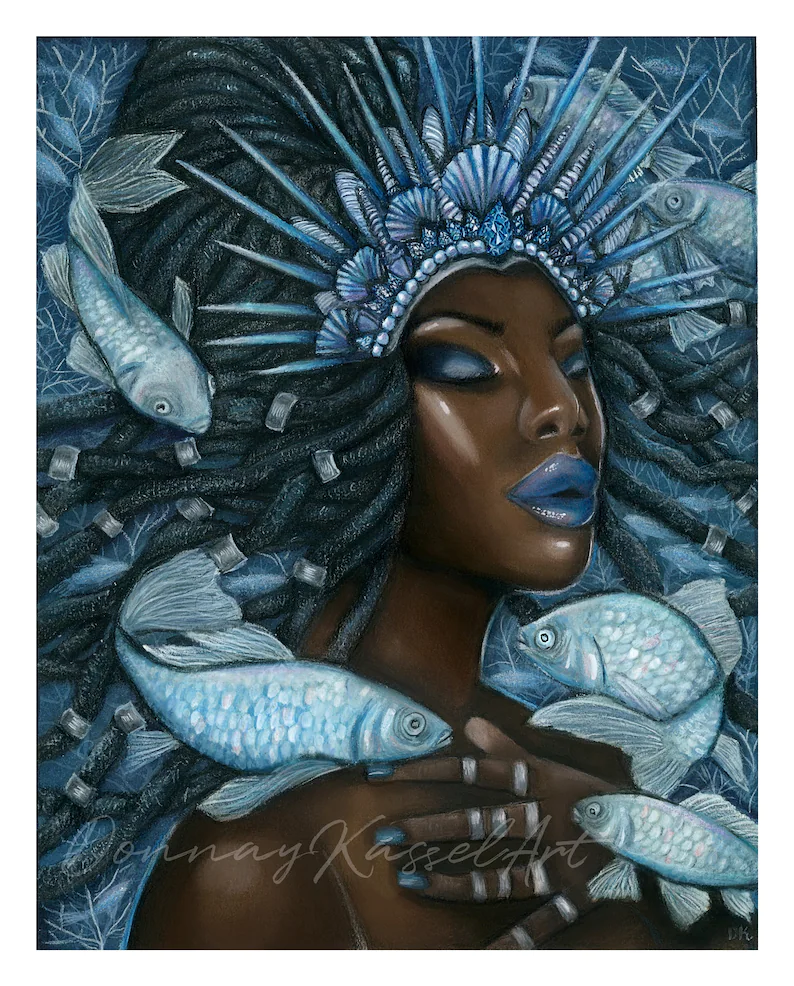
Sometimes, a Yoruba divinity can fit simultaneously into more than one orisha category. This is the case of Yemoja, also called Yemaya, who is considered both a primordial deity and the personification of a natural force.
Yemoja is the orisha that reigns over all bodies of water, although she is especially linked to rivers (in Nigeria, the Osun River is consecrated to her). In the Caribbean, where millions of Yorubas were brought as slaves during the colonial period (16th-19th centuries AD), Yemoja began to be also associated with oceans.
Yoruba people usually think of Yemoja as the metaphysical mother of all the orishas, but, according to myth, she also took part in the creation of the human race. Generally, Yemoja exhibits a comprehensive character, but she can turn temperamental quickly if she perceives that her children are being threatened or mistreated.
Wrapping Up
In the Yoruba pantheon, the orishas are the deities that help Oludumare, the Supreme God, to keep cosmogonic order. Each orisha has its own powers and domains of authority. However, despite their divine status and remarkable powers, not all the orishas have the same origin.
Some of these divinities are regarded as primordial spirits. Other orishas are deified ancestors, meaning that they were at first mortals. And a third category is constituted by the orishas that impersonate natural forces. It’s worth noticing that, in the case of certain Yoruba divinities, these categories can be overlapped.








